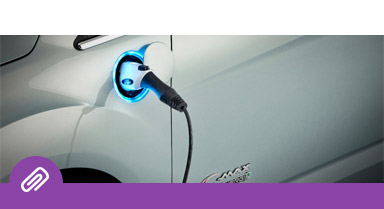Sustainability Report 2013/14
Vehicle Safety and Driver Assist Technologies
At Ford, we have a long history of developing and implementing new innovations that improve the safety performance of our vehicles. Back in 1955, for example, Ford became the first automaker to offer factory-installed safety belts. That legacy of innovation continues today.
Read more about our highlights
Our Vision for the Future
The radar- and camera-based technologies we offer today are a first step toward our vision of automated vehicles that still keep the driver in the loop to take back control of the vehicle, if needed. We have also been working on separate technologies that will enable vehicles to communicate with one another and with roadway infrastructure. Automated and connected vehicles will help to make driving safer, reduce traffic congestion and lower emissions.
Read more about Accident Avoidance and Driver Assist Technologies
Our Commitments and Performance Progress
Commitment: Design and manufacture vehicles that achieve high levels of performance in real-world safety and in public domain crash-testing programs and that offer innovative safety and driver assist technologies.
For the 2014 model year, nine Ford Motor Company vehicles earned the highest possible Overall Vehicle Score of five stars in the New Car Assessment Program (NCAP) of the U.S. National Highway Traffic Safety Administration. For the 2013 Insurance Institute for Highway Safety Awards, 13 Ford Motor Company vehicles earned Top Safety Picks.
See additional vehicle safety commitments at Ford’s Goals, Commitments and Status: Vehicle Safety
University Partnerships
Ford collaborates with university partners on a broad array of research projects, including research into advanced safety technologies, and has more than 130 active projects globally. In 2013, we awarded 28 new research grants to 19 universities around the globe.
Read more about Occupant Protection Technologies
Case Study: Public Domain Ratings
Safety regulations and public domain rating programs differ around the world, and they are constantly evolving in response to various regional factors.
Case Study: Electrified Vehicle Safety
Because electrified vehicles (EVs) typically contain a battery with 300+ volts of power (compared to a 12-volt battery in a “regular” vehicle), first responders may need some special knowledge and skills to be able to safely address a vehicle crash involving an EV.
Case Study: Driver Distraction
Studies indicate that approximately 10% of drivers are using their cell phones at any given time, which has heightened concerns about the potential for driver distraction.
Voice: Pete Hardigan
Director of Sustainability, Environment and Safety Engineering, Asia Pacific, Ford Motor Company
“Asia Pacific is a great example of our One Ford system at work. ... We’re taking processes and products from around the globe and we’re introducing them in Asia while meeting all the differing regulatory requirements.”
Post-Crash Technologies
SYNC®-equipped vehicles come with a nonsubscription call-for-help system called SYNC 911 Assist (in the U.S.) or Emergency Assistance (in Europe, China, India and Australia).
Read more about Post-Crash Response Technologies
Driver Education
Ford Driving Skills for Life (Ford DSFL), our flagship, free driver-education program, demonstrates our commitment to help new drivers to improve their motoring skills. Ford DSFL has been active in the United States and Asia, and in late 2013 we launched it for the first time in Europe.
Read more about driver education
2013 Highlights
16 countries in which Ford Driving Skills for Life is training drivers.
5 stars for adult protection in the most recent Latin NCAP, for the Ford EcoSport and Ford Focus.
© 2014 Ford Motor Company






